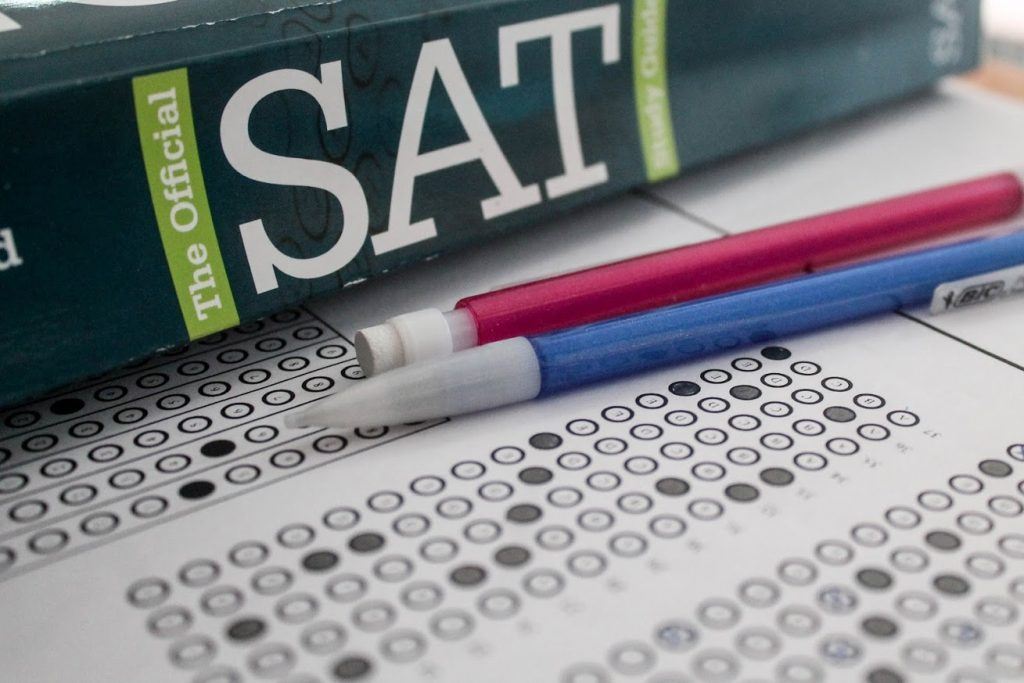What is the SAT?
The SAT is a standardized test extensively used for college admittances in the United States. The test is intended to measure a student’s readiness for college.
The modern SAT, introduced in 2016, takes three hours to finish, plus 50 minutes for the SAT with essay, and as of 2014 costs US$52.50 (up to US$101.50 outside of the United States). Taking the SAT, or its rival, the ACT, is required for freshman admission to many, but not all, universities in the United States.
The SAT is usually taken by high school juniors and seniors. The College Board states that the SAT accesses literacy and writing skills that are needed for academic success in college. They state that the SAT measures how well the pupils explore and answer problems—talents they learned in high school that they will be essential in college. However, the test is overseen under a tight time limit to help produce a variety of scores.
The College Board also says that use of the SAT in mixture with high school grade point average (GPA) provides an enhanced display of success in university than high school grades alone, as measured by college freshman GPA.
Many students find that using test preparations books help to improve their scores.
See out list of the best SAT prep books here.
SAT Format
| Critical Reading | 52 | 65 minutes | Grammar, usage, and diction |
| Math - No Calculator | 20 | 25 minutes | Number and operations; algebra and functions; geometry; statistics, probability, and data analysis |
| Math - Calculator | 38 | 55 minutes | Number and operations; algebra and functions; geometry; statistics, probability, and data analysis |
| Writing | 44 | 35 minutes | Vocabulary, Critical reading, and sentence-level reading |
SAT Scoring Structure
SAT comprises of three major segments: Critical Reading, Mathematics, and Writing. Each unit gets a score on the scale of 200–800. All scores are multiples of 10. Overall scores are calculated by adding up scores of the three sections. Each main section is separated into three parts. The test encompasses 3 hours and 45 minutes of actual timed units. The problems range from easy, medium, and hard dependent on the scoring from the experimental sections. Easier problems usually appear closer to the start of the section while harder problems are toward the end in certain segments. This is not accurate for every section (the Critical Reading section is in chronological order) but it is the rule of thumb mainly for math, grammar, and the 19 sentence-completions in the reading units.
Students get their online score reports roughly three weeks after test administration (six weeks for mailed, paper scores), with each unit graded on a scale of 200–800 and two sub scores for the writing section: the essay score and the multiple choice sub score. In addition to their score, pupils receive their percentile (the percentage of other students with inferior scores). The raw score, or the sum of points gained from right answers and lost from wrong answers is also incorporated.
SAT Availability
The SAT is offered seven times a year in the United States; in October, November, December, January, March (or April, alternating), May, and June. The test is usually offered on the first Saturday of the month for the November, December, May, and June administrations. In other countries, the SAT is offered on the same dates as in the United States except for the first spring test date (i.e., March or April), which is not offered. The exam was taken by 1,698,521 high school graduates in the class of 2015.
Find your nearest testing location here.
Applicants desiring to take the test may register online at the College Board’s website, by mail, or by telephone, at least three weeks prior to the test date.
The SAT costs $54.50 (plus additional fees if taken outside the United States). The College Board makes fee renunciations accessible for low income pupils.
Applicants whose religious principles prevent them from taking the exam on a Saturday may appeal to take the test on the following day, except for the October test date in which the Sunday test date is eight days after the main test offering. Such appeals must be made at the time of registration and are subject to rejection.
Students with demonstrable disabilities, including physical and learning disabilities, are qualified to take the SAT with accommodations. The standard time increase for pupils requiring extra time due to learning disabilities is time + 50%; time + 100% is also obtainable.
